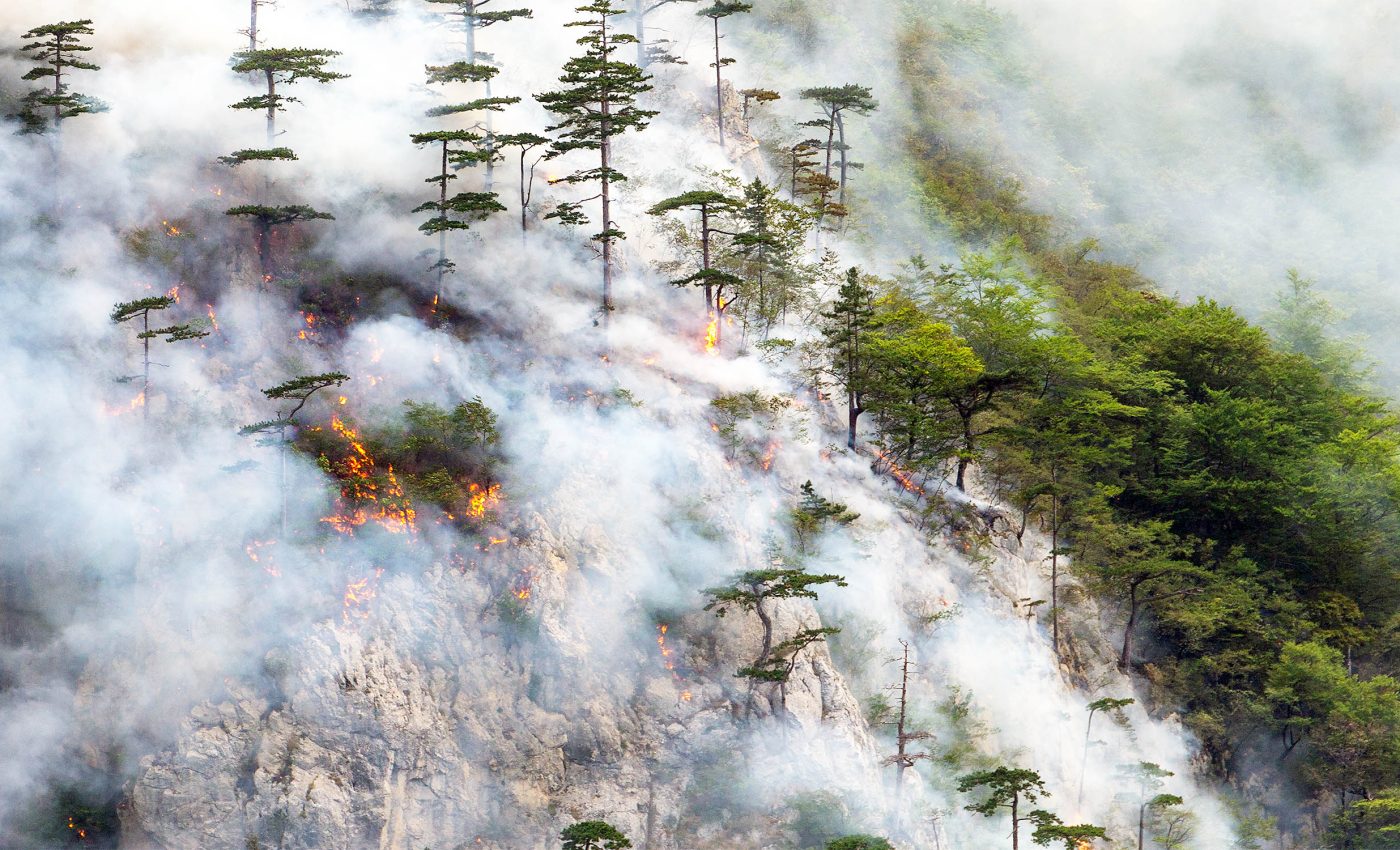
Reducing aerosol pollution causes more wildfires in an ironic twist of fate
The quest for cleaner air is a noble, shared aspiration for a healthier planet and happier lungs. But what if this pursuit to improve air quality by reducing aerosol pollution, however well-intentioned, inadvertently fuels a different kind of environmental disaster?
A study from the University of California, Riverside (UCR) reveals a startling paradox: reducing air pollution could lead to an increase in forest fires, particularly in the vast boreal forests of the northern hemisphere.
Aerosol pollution and wildfires
The culprits behind this unexpected twist of pollution are aerosols, tiny particles like dust, sea salt, and airborne chemicals produced by fossil fuel combustion.
While these particles are notorious for their role in poor air quality, they also possess a surprising ability to reflect sunlight and brighten clouds, effectively shielding the Earth from some of the sun’s heat.
As we clean up our air by reducing aerosol pollution, we inadvertently remove this protective shield, allowing more solar radiation to reach the ground.
“Cleaning up the air, which is something we all want to do, will accelerate global warming and also impact wildfires unless we also reduce emissions of greenhouse gases like methane and carbon dioxide,” warns Robert Allen, a UCR climatology professor and the lead author of the study.
Boreal forests and aerosol pollution
The boreal forests, spanning Canada, Alaska, northern Europe, and northern Russia, are particularly vulnerable to this warming effect by reduced pollution.
The increased heat, combined with the greenhouse effect of rising carbon dioxide (CO2) levels, creates a perfect storm for wildfires.
Heatwaves and droughts become more frequent and intense, drying out the soil and vegetation, turning them into prime fuel for flames.
“When you dry out the soil, that also dries out plants, which makes them more combustible,” explains Allen. “Warming contributes to wildfires.”
Air pollution and wildfire paradox
While both CO2 and aerosol reductions contribute to warming and increased fire risk, the study reveals a surprising twist: reducing aerosol emissions actually leads to a more significant increase in fires than reducing CO2 emissions. This is due to a complex interplay between plant physiology, water availability, and temperature.
As plants photosynthesize, they absorb CO2 through pores in their leaves. With higher CO2 levels, these pores don’t need to stay open as long, leading to reduced water loss and drier soil.
However, the warming effect of reduced aerosols exacerbates this drying effect, as higher temperatures increase evaporation from both plants and soil. This creates a tinderbox scenario, where parched vegetation and dry soil become highly susceptible to ignition.
Methane: A key piece of the puzzle
The good news is that there are ways to mitigate the warming effects of aerosol reduction. One promising avenue is to focus on reducing methane emissions from agriculture, fossil fuels, and landfill waste.
Methane, a potent greenhouse gas with a shorter lifespan than CO2, has a disproportionately large impact on global warming. Reducing methane emissions could effectively offset the warming induced by aerosol mitigation.
Fortunately, there is already a global movement to address methane emissions. More than 150 countries have pledged to reduce methane emissions by at least 30 percent from 2020 levels by 2030.
“We are on the right trajectory with regards to aerosols and methane,” says Allen. “I still have hope, but there is a narrow window of time to make this happen and avoid the worst projected climate impacts. This decade is the important one.”
Balancing air pollution
The UCR study serves as a stark reminder of the complex and interconnected nature of our planet’s systems.
While the pursuit of cleaner air is undeniably important, it’s crucial to consider the unintended consequences of our actions. The air pollution paradox highlights the necessity of addressing both aerosol pollution and greenhouse gas emissions simultaneously.
By simultaneously reducing both aerosol and greenhouse gas emissions, we can strive for a future where both our air and our forests are healthy and resilient. It’s a delicate balance, but one that we must achieve for the sake of our planet and future generations.
The study is published in the journal Science Advances.
—–
Like what you read? Subscribe to our newsletter for engaging articles, exclusive content, and the latest updates.
Check us out on EarthSnap, a free app brought to you by Eric Ralls and Earth.com.
—–













